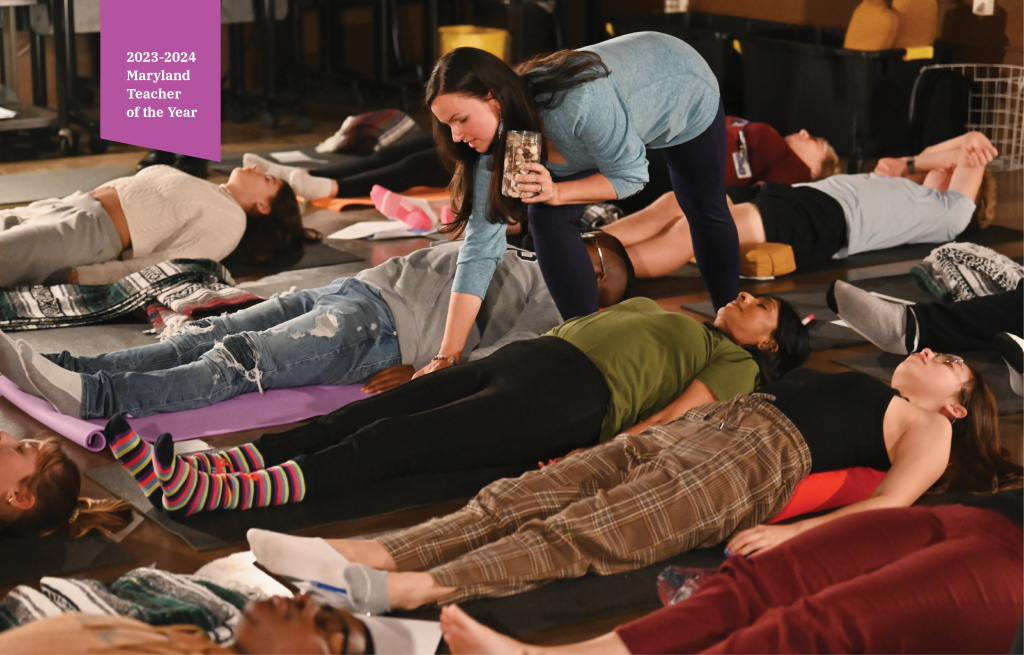Teacher’s Toolkit
Mary Kay Connerton, Anne Arundel County Wellness Educator

Mary Kay Connerton is the wellness coordinator at Annapolis High School and the 2023-2024 Maryland Teacher of the Year. She’s a member of the Teachers Association of Anne Arundel County. Her commitment to student wellness is a passion she is sharing throughout her county and in conversations with elected leaders and decision-makers.
WELLNESS FOR EVERYONE My teaching journey began as a special educator in a co-taught class where the language arts benchmark averaged 24%. I saw our students struggle with academics and behavior and began incorporating wellness practices such as yoga, meditation, and team-building to help prepare them for learning. By the third quarter, our average shot up to 85% and we nearly eliminated classroom disruptions all because we took five minutes a day to focus on wellness.
FINDING MY MISSION Wellness practices prepared students for our time together and their learning. There was a ripple effect—the way they carried themselves in the hallways, the way they responded to other people, and the way they opened up about the stories no one else knew. These experiences fueled my mission for sharing wellness practices as a vehicle to success.
WHAT IF? The National Alliance of Mental Illness reports that 75% of all lifetime mental health conditions begin before age 24. Our children come to us every day with a story—so often filled with trauma. They don’t have to wait to deal with their experiences as adults. What if we gave them the tools to help cope? What if we teach children healthy responses in their youth that they can apply throughout their life? We are uniquely positioned to give students tools to process, heal, and grow from their stories.
THE VISION At my diverse high school, I serve as the wellness coordinator, the only one in our district. I’ve created our four-pillar Wellness Program—Wellness in the Classroom, Wellness Enrichment, Employee Wellness, and Community Wellness—which supports our whole school community. Some offerings of the programming are resource support for classes, trauma informed wellness groups in collaboration with student services, weekly and monthly wellness offerings for employees, and quarterly community wellness events. I’ve also implemented a county-wide yoga program and a social emotional learning/wellness curriculum with Johns Hopkins University (JHU) for all 25,000 county high schoolers. I’m currently partnering with JHU and conducting research to demonstrate its outcomes.
THE SCIENCE Some may think that wellness practices don’t directly impact performance but there’s plenty of science proving they do. During the pandemic, I led meditation sessions with our AP physics students. The number of students who scored a 5 on the AP exam at our school was triple that of the global average, and among the test takers, minority girls scored the highest. These results are powerful scientific evidence of the benefit of wellness practices. Testimonials prove our students are empowered with tangible tools to navigate all aspects of their lives. We must take this holistic approach to our students’ education— it allows for their success to be limitless.

